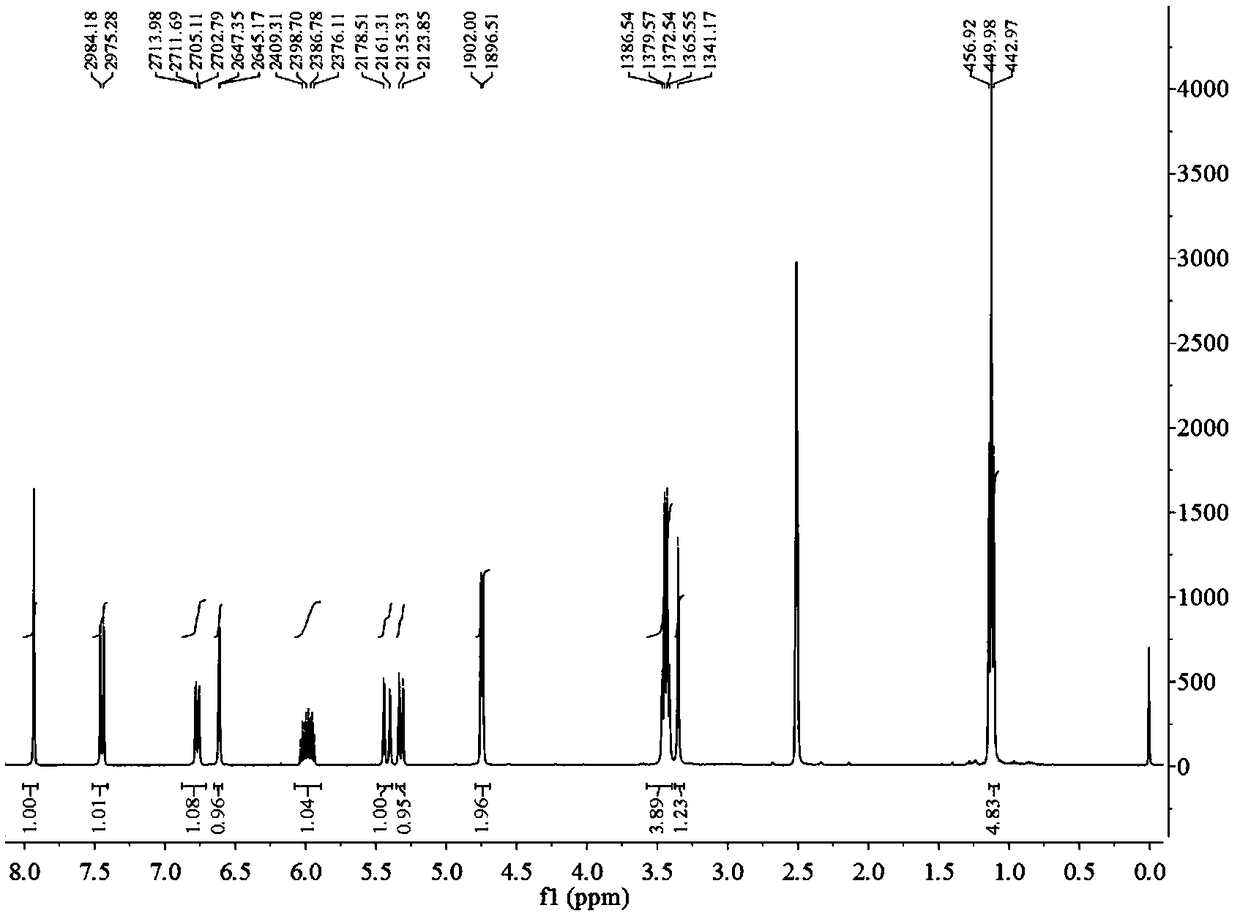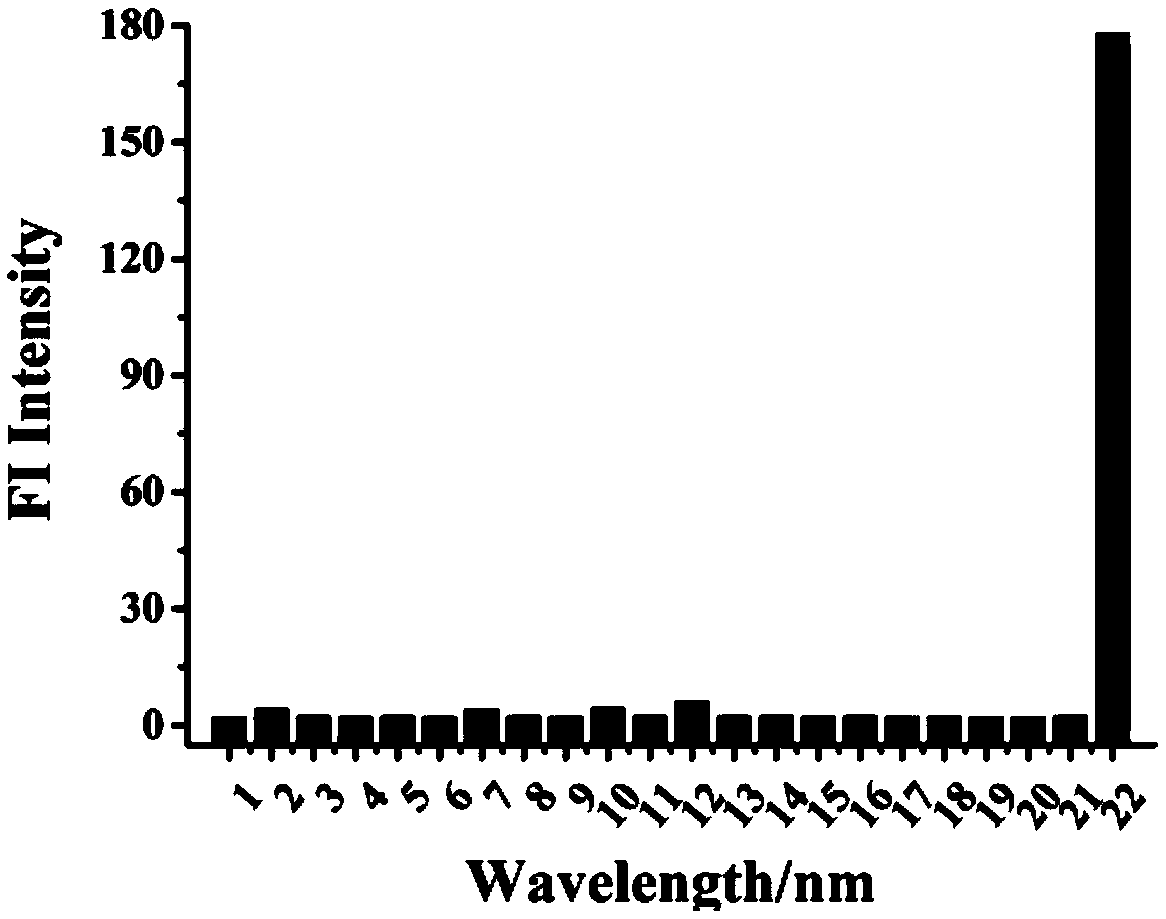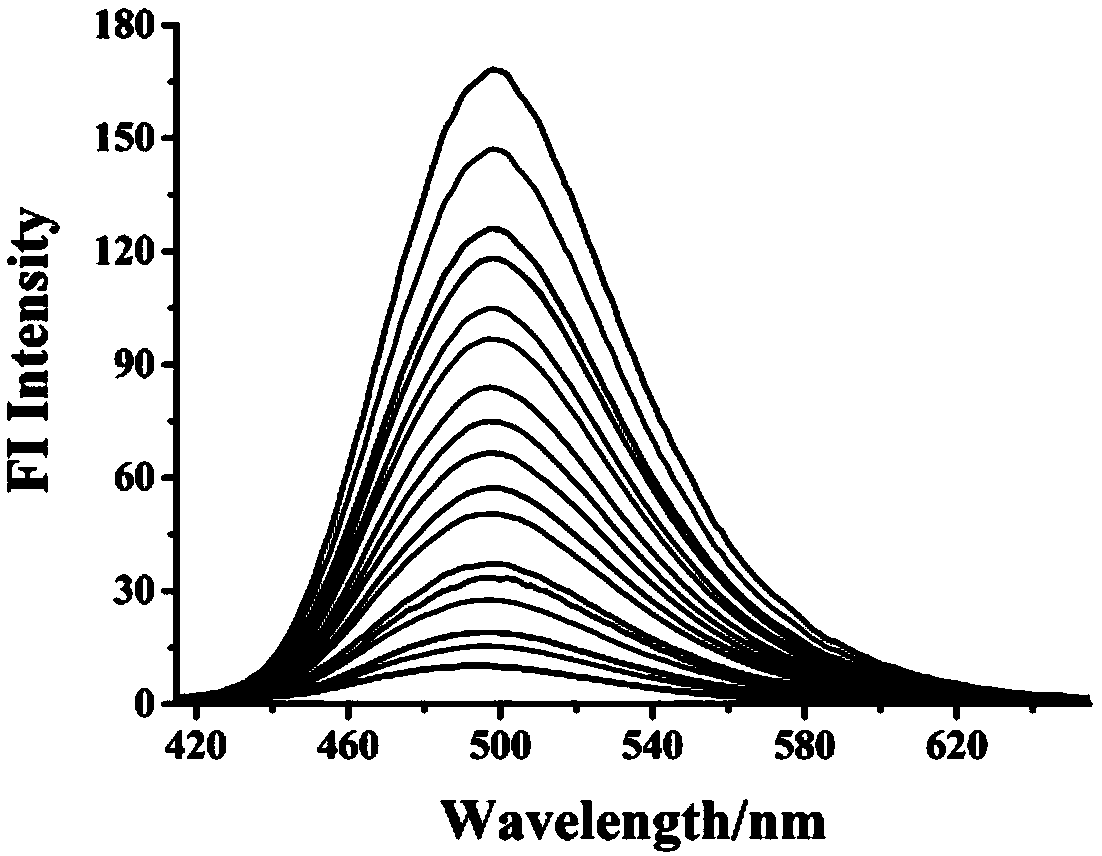CO (carbon monoxide) fluorescence probe as well as preparation method and application thereof
A fluorescent probe and probe technology, used in chemical instruments and methods, fluorescence/phosphorescence, luminescent materials, etc., can solve the problems of short excitation wavelength, long reaction time, small Stokes shift, etc., and achieve fluorescence intensity improvement and wide application. Prospects, Effects of Avoiding Photobleaching and Phototoxicity
- Summary
- Abstract
- Description
- Claims
- Application Information
AI Technical Summary
Problems solved by technology
Method used
Image
Examples
Embodiment 1
[0030] Synthesis of embodiment 1 CO-7 fluorescent probe
[0031] Compound 7-hydroxycoumarin 1mmol and allyl chloride 2mmol were stirred in 10mL dichloromethane, the reaction temperature was 25°C, the reaction time was 18h, vacuum distillation, vacuum drying, dichloromethane / petroleum ether (V / V=5:1) was used as the eluent to perform silica gel column chromatography to obtain compound CO-7; yield: 87%. That 1 H NMR spectrum as figure 1 Shown:
[0032] 1 H NMR (400 MHz, DMSO-d6) δ 8.10 (d, 1H), 7.81 (d, 1H), 7.45 (d, 1H), 6.61 (dd, J = 4.0 Hz, 1H), 6.51 (d, 1H) , 6.02 (m, 1H), 5.98 (dd, J = 4.0 Hz, 1H), 5.44 (dd, J = 4.0 Hz, 1H), 5.34 (d, 2H).
Embodiment 2
[0033] Example 2 The selectivity of CO-7 fluorescent probes to different molecules or ions
[0034] The CO-7 fluorescent probe in Example 1 was prepared into a stock solution with a concentration of 1 mM.
[0035] Palladium chloride and ruthenium(II) tricarbonyldichloride dimer (CORM-3) were dissolved in DMSO solution to prepare 5 mL of a mother solution with a concentration of 10 mM as the CO mother solution.
[0036] The following substances: Br - , ClO - , Cu 2+ , F - , Fe 2+ , H 2 o 2 , HClO, Hg 2+ , HPO 4 2- , Mg 2+ , Na + , Na 2 S, NaHS, NO - , NO 3- , OAC - , SCN-, SO 4 2- , Zn 2+ , Hcy , Cys, CO were prepared in phosphate buffer (0.01mM, pH=7.4) to prepare 5 mL stock solution with a concentration of 40 mM.
[0037] Take 22 test tubes, add 25 μL probe mother solution, 225 μL DMSO and the mother solution of each ion or molecule, and control with an equal amount of water instead of interfering substances; dilute to 5 mL with phosphate buffer (0.01 mM, ...
Embodiment 3
[0038] Example 3 Fluorescence intensity of CO-7 under different concentrations of CO
[0039]Prepare 10 mL of a mother solution with a concentration of 100 mM CO as in Example 2, and dilute it with water to 17 equidifferent concentrations of 1-9 mM, using water as a control. Dilute the CO-7 mother solution in Example 2 to 5 μM, add different concentrations of CO, and perform fluorescence detection after 60 minutes of reaction (λex = 400 nm, λem = 500 nm), detect the fluorescence intensity in each system, and use the fluorescence intensity - CO concentration curve, such as image 3 shown. It can be seen from the figure that when the CO concentration is the lowest test concentration (1 μM), CO-7 has a fluorescence response; as the CO concentration increases, the fluorescence intensity of the reaction system gradually increases, and when the CO concentration reaches 8 mM, the reaction system fluorescence Intensity reaches saturation.
PUM
 Login to View More
Login to View More Abstract
Description
Claims
Application Information
 Login to View More
Login to View More - R&D
- Intellectual Property
- Life Sciences
- Materials
- Tech Scout
- Unparalleled Data Quality
- Higher Quality Content
- 60% Fewer Hallucinations
Browse by: Latest US Patents, China's latest patents, Technical Efficacy Thesaurus, Application Domain, Technology Topic, Popular Technical Reports.
© 2025 PatSnap. All rights reserved.Legal|Privacy policy|Modern Slavery Act Transparency Statement|Sitemap|About US| Contact US: help@patsnap.com



